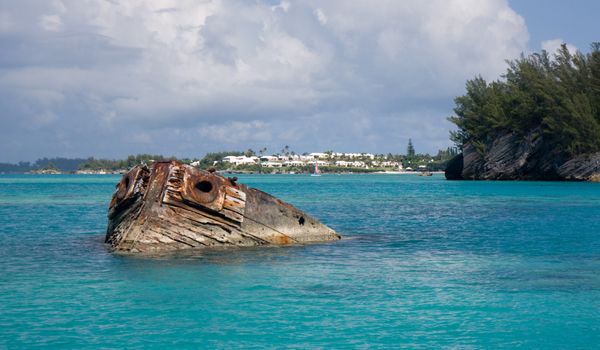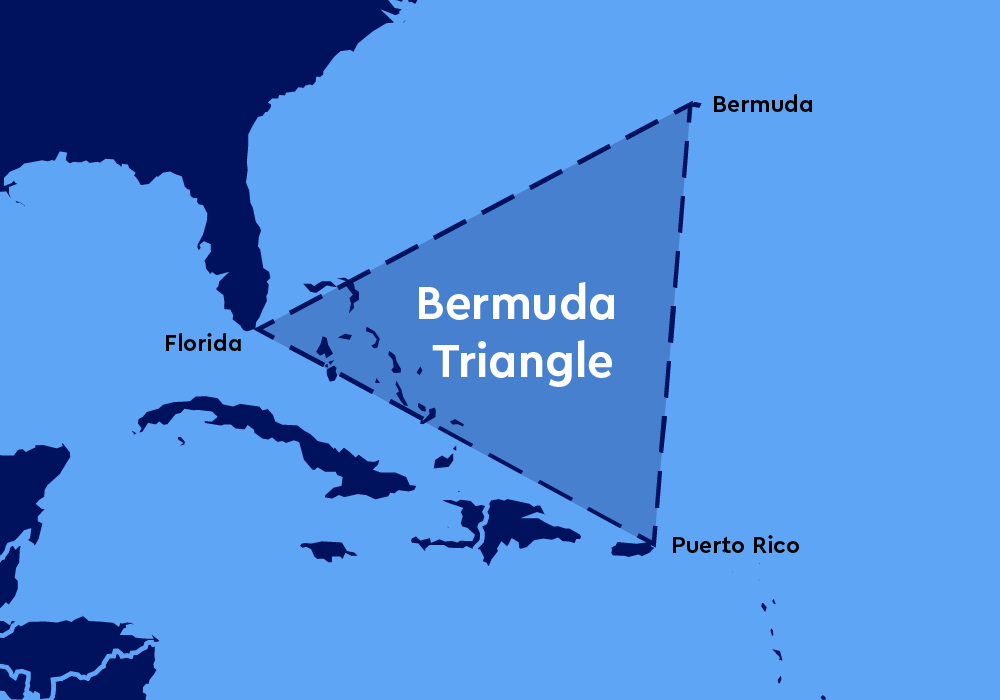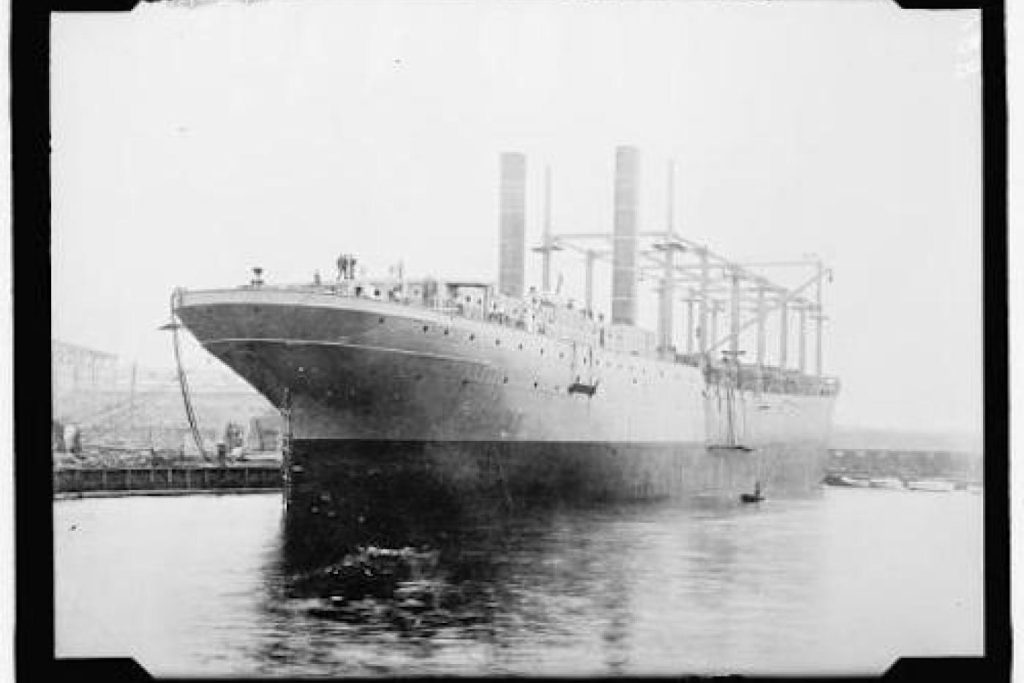Old Sea Legends For Crew is our monthly blog that takes you through the lore and tales of the sea. In this article, we take a look at the Bermuda Triangle.

Why’s It Called The Bermuda Triangle?
The term “Bermuda Triangle” was coined in a 1964 article by Vincent Gaddis for the American pulp magazine Argosy.
Gaddis highlighted a pattern of mysterious disappearances of ships and planes in the area, with no explanations offered at the time. This narrative of enigma and danger captured the public’s imagination and has persisted ever since.
Geographic Facts
Spanning approximately 440,000 square miles, the Bermuda Triangle is located between Bermuda, Florida, and Puerto Rico.
Notably, it includes the Milwaukee Depth in the Puerto Rico Trench, the deepest point in the Atlantic Ocean, reaching depths of 27,493 feet (8,380m).

Is It Dangerous?
In our contemporary times, the Bermuda Triangle is not considered particularly dangerous despite what many have suspected.
Advances in navigation, weather forecasting, and technology have ensured safe passage for modern ships and airplanes. The US Navy, US Coast Guard, and NOAA all insist that there are no supernatural forces at work in the area.
Nevertheless, the area’s reputation exceeds itself. Stories of disappearances continue to captivate.
What Does The Science Say?
Over time, more than 50 ships and 20 planes are said to have vanished in the Bermuda Triangle.
Notable incidents include the disappearance of the USS Cyclops in 1918, which carried 306 crewmembers, and Flight 19, a group of five torpedo bombers that vanished in 1945. Despite exhaustive searches, no wreckage was ever found.
Various explanations have been proposed over the years. Environmental factors such as reefs, shallow waters, and severe weather conditions around the Gulf Stream have typically made navigation treacherous. Modern theories include rogue waves and methane gas eruptions from the ocean floor. Some even suggest electromagnetic interference that affect navigation instruments.
Infamous Bermuda Triangle Mysteries
USS Cyclops
The USS Cyclops, a massive Navy fuel ship, is perhaps the most significant loss of life in the Bermuda Triangle not related to combat. In March 1918, the Cyclops set off from Brazil to Baltimore with 10,800 tons of manganese ore and 309 crew members. The ship’s final message indicated that all was well, but it never reached its destination. Despite an extensive search, no wreckage or trace of the ship and its crew was ever found. Theories about its disappearance range from enemy submarines to structural failure, but none have been confirmed.

Witchcraft
The Witchcraft, a 23-foot luxury cruiser, disappeared under baffling circumstances in December 1967. Captain Dan Burack and his friend, Father Patrick Horgan, set out from Miami to enjoy the Christmas lights from the sea. Just one mile offshore, Burack reported to the Coast Guard that they had hit something, though the damage was not serious. The Coast Guard arrived within 19 minutes, but the Witchcraft was gone, with no trace of the vessel or its occupants. Despite extensive searches, nothing was ever found. The Witchcraft’s disappearance is particularly puzzling because it was considered virtually unsinkable and equipped with numerous life-saving devices, none of which were used.
Verdict: Is The Bermuda Triangle Cursed?
Advances in technology and navigation have demystified many of the legends, though the Bermuda Triangle continues to fascinate and inspire with its rich tapestry of sea lore. But despite numerous tales of disappearances, NOAA confirms that the Bermuda Triangle doesn’t have a higher rate of mysterious losses than any other heavily traveled area of the ocean.
To keep up to date with the latest Superyacht Content News, click here.
Sign up to our Newsletter below:


.gif)









.gif)






